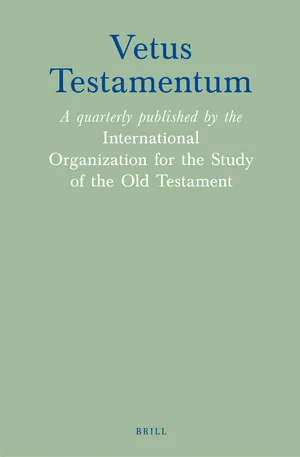https://doi.org/10.1163/15685330-bja10062
최근 학계에서는 히브리어 성경에 등장하는 의복과 장신구 관련 묘사가 서사적으로 어떤 기능과 함의를 가지는지에 대해 관심이 커지고 있다. 그러나 에스더서에 나오는 다양한 의복 품목과 옷을 입고 벗는 행위에 대한 수많은 언급들은 상대적으로 덜 탐구되었다. 사실, 에스더서는 의복 이미지를 복잡한 태피스트리처럼 엮어내고 있으며, 이 태피스트리를 풀어내는 것이 본문을 제대로 해석하는 데 필수적이다. 등장인물들은 의복을 통해 특정 관습적 기대에 순응하고 있음을 전달하며, 이는 다른 등장인물들이 자신과 관계하고 행동하는 방식에 영향을 미친다. 등장인물들은 의복을 사용하여 자신의 항의를 표명하거나, 반대로 자신의 진짜 의도를 숨길 수도 있다. 무엇보다도, 의복의 차이는 다양한 등장인물들의 권력과 지위 사이의 구별을 발전시킨다. 그러므로 의복은 에스더서에서 독자적이고 중요한 기능을 수행하며, 인물 묘사와 줄거리를 이해하는 새로운 길을 제공한다.
Recent scholarship has shown a burgeoning interest in the narrative functions and implications of references to dress and adornment in the Hebrew Bible. Yet the many references to the various clothing items and associated acts of dressing and undressing in the book of Esther have been less explored. In fact, the book of Esther weaves a complex tapestry of garment imagery, and untangling this tapestry is essential to properly interpreting this text. Through dress, characters can communicate their conformity to certain conventional expectations, affecting the ways in which other characters relate and behave towards them. Characters can utilize dress to express their protest, or conversely hide their true intentions. Crucially, differences in clothing develop distinctions between the power and status of the various characters. Clothing therefore has discrete and important functions in the book of Esther, providing new access to understanding characterisation and plot.






